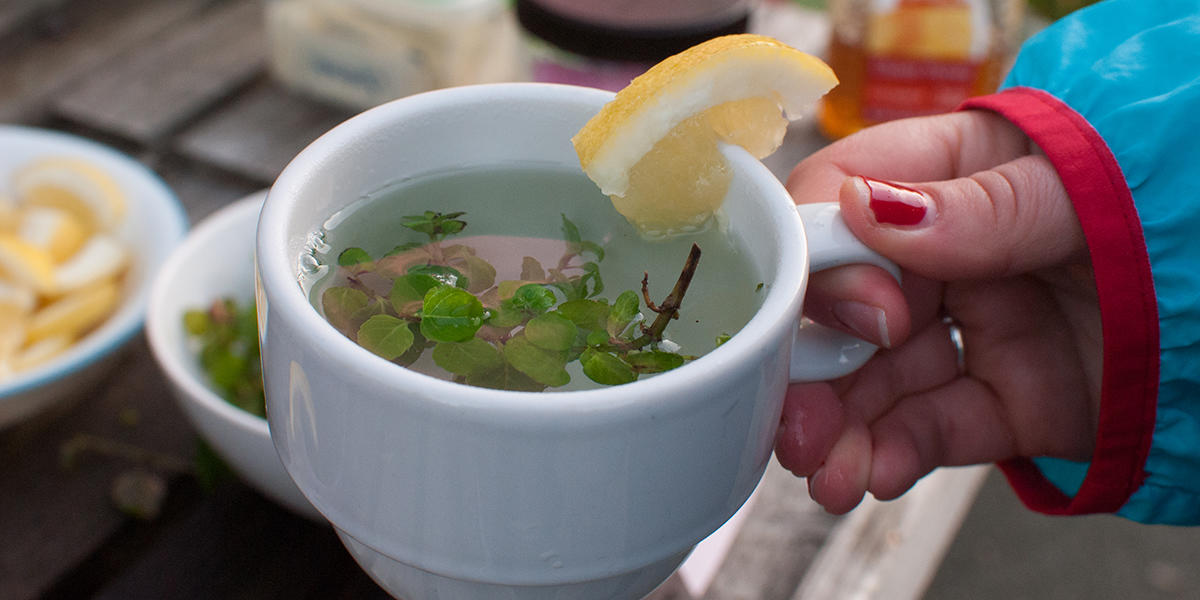Your parks need you now
Your support helps fight climate change and promote park sustainability—please give now.

If you’re like me, you have a variety of teas at home that promise you sleepy dreams, good digestion, immune boosters, and more. The sheer number of teas can sometimes be overwhelming—and quite costly. Rather than going to your local grocery store, have you ever considered going out to your backyard for tea ingredients? You don’t need to look far to find plants that benefit your health, taste delicious, and—best of all—cost virtually nothing.
Not sure where to start? Then this article is for you! I gathered several different native plants and brewed teas from the fresh and dried leaves. I have included instructions on collection*, brewing, the possible benefits**, and my personal reviews of each (the more “noms” in the rating, the better it tastes!). Hopefully one of these teas will entice you to try making some on your own. Enjoy!
*Please note, the collection of plant material in the parks is forbidden. All of these plant species can be found at your local nurseries so you can plant your own tea garden. If you are unsure of the identification of the plant, do not collect it!
**Seek your doctor's advice before trying any herbal remedy.
Standard Tea Preparation (additional notes under specific species as needed)
Yerba Buena (Satureja douglasii)
Collection: Gather the runners from April through August. The long unbranching stems are the best, and it is ok to gather ones with flowers.
Preparation:
Medicinal Uses: It can be used as a diaphoretic, but it is best used as an addition to less flavorful medicinal teas to make them taste better without minimizing their effects.
Tea Rating: Nom Nom Nom Nom! This is wonderful, using fresh or dry leaves. It is refreshing, light, and minty.
Hummingbird Sage (Salvia spathacea)
Collection: Collect the large, healthy-looking basal leaves (the ones at the base) from May to July.
Preparation:
Medicinal Uses: Can be used as a decongestant expectorant.
Tea Rating: Nom Nom. This is not my favorite tea. However, it tastes much better using dried leaves, as opposed to fresh ones. It is a light tea, with a floral taste.
Coastal Strawberry (Fragaria chiloensis)
Collection: You can collect the leaves and stems year-round.
Preparation: For dry tea: Dry in a paper bag. The stems and leaves can be used. It can be kept for a year.
Medicinal Uses: It is high in Vitamin C, and may help relieve stomachaches.
Tea Rating: Nom Nom Nom! I prefer the tea made with fresh leaves because the flavors seem stronger. It has a slightly sweet fruity flavor, with a touch of tartness.
Coyote Mint (Monardella villosa)
Collection: Collect the leaves year-round, or the flowers from May through August.
Preparation:
Medicinal Uses: An infusion of the leaves has been used in the treatment of stomachaches.
Tea Rating: Nom. This is very refreshing, since it’s a cold tea, and has a slightly bitter minty flavor.
If you’re interested in learning more, check out these two helpful books:
Your support helps fight climate change and promote park sustainability—please give now.